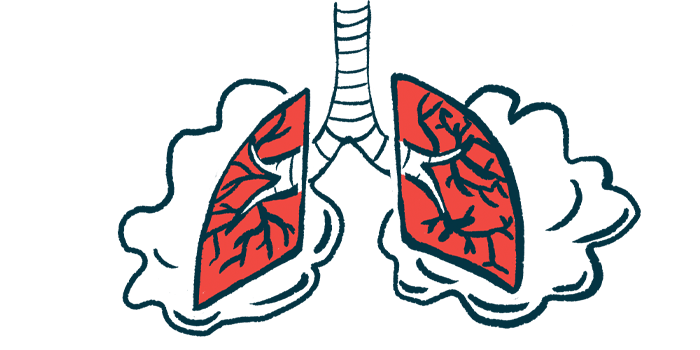SSc lung cells show gene activity linked to scarring in study
Analysis IDs over 1,000 genes with different expression vs. controls
Written by |

Cells present along the walls of small blood vessels in the lungs, called pericytes, have distinct gene activity in people with systemic sclerosis (SSc)-associated pulmonary fibrosis (PF), according to a new study.
Pericytes from SSc patients showed an increased expression, or activity, of genes involved in lung fibrosis (scarring), blood vessel formation, and extracellular matrix organization. The extracellular matrix is a network of molecules that maintain cell structure.
The study, “Transcriptomic characterization of lung pericytes in systemic sclerosis-associated pulmonary fibrosis,” was published in the journal iScience.
Pulmonary fibrosis is a type of interstitial lung disease, a group of disorders marked by inflammation and fibrosis. SSc-associated PF is the leading cause of death in SSc patients.
Pericytes are key cells for the maintenance of blood vessels in the lungs. These cells establish communication routes with other cells types, via a direct interaction or the release of growth factors.
However, the role of pericytes in SSc-PF is still far from understood. Studies have suggested that they may contribute to the transition of fibroblasts into myofibroblasts, a normal process in wound healing. However, the persistent presence of myofibroblasts is key in driving tissue fibrosis.
Gene activity increased in over 700 genes, decreased in over 450
Here, researchers in the U.S. compared the transcriptome — the entire set of messenger RNA molecules, which are derived from DNA and serve as templates to build proteins — of pericytes isolated from the lungs of patients with severe SSc-PF versus control lungs without lung disease.
The transcriptome analysis identified 1,179 genes whose activity was different between SSc-PF cells and controls. Of these, the activity of 717 genes was increased, or upregulated, and that of 462 was decreased, or downregulated in the patients relative to the controls.
Genes involved in cell adhesion, mobility and communication, extracellular matrix organization, and blood vessel formation were among the most activated in SSc lung pericytes.
[These findings suggest that] the gene expression signature of SSc lung pericytes [small blood vessels in the lungs] is unique.
The researchers used a computational tool, called iPathwayGuide, to identify the key genes and pathways with a distinct expression between the two groups.
The GNG4 gene was identified as a central hub gene whose activity is increased in SSc lung pericytes. This genes codes for a family of proteins that relay signals from the environment into the cell. The researchers also found that GNG4 is directly connected to 19 other genes whose activity was different in SSc-PF.
Other pathways that were altered in SSc-PF included PI3K-AKT as well as genes associated with the formation and structural alterations in blood vessels. The PI3K-AKT pathway plays a central role in organ scarring. The prostaglandin signaling pathway also was different in SSc-PF. Among their many roles, prostaglandins are involved in inflammation, blood vessel widening, and uterine contractions.
Other hub genes whose levels also were increased in SSc lung pericytes included C3, which codes for the complement C3 protein, part of the immune system, and its receptor C3AR1. Both were previously implicated in fibrosis.
Overall, these findings suggest that “the gene expression signature of SSc lung pericytes is unique,” the researchers wrote.
“Further studies will be needed to characterize the functional properties of SSc lung pericytes and explore other targets identified in our analysis,” the team concluded.






